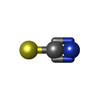Entry Database : PDB / ID : 2rkyTitle Crystal structure of the fourth and fifth fibronectin F1 modules in complex with a fragment of staphylococcus aureus fnbpa-1 Fibronectin Fibronectin-binding protein Keywords / / / / / / / / / / / / / / / / Function / homology Function Domain/homology Component
/ / / / / / / / / / / / / / / / / / / / / / / / / / / / / / / / / / / / / / / / / / / / / / / / / / / / / / / / / / / / / / / / / / / / / / / / / / / / / / / / / / / / / / / / / / / / / / / / / / / / / / / / / / / / / / / / / / / / / / / / / / / / / / / / / / / / / / / / / Biological species Homo sapiens (human)Method / / Resolution : 1.8 Å Authors Bingham, R.J. Journal : Proc.Natl.Acad.Sci.Usa / Year : 2008Title : Crystal structures of fibronectin-binding sites from Staphylococcus aureus FnBPA in complex with fibronectin domainsAuthors : Bingham, R.J. / Meenan, N.A. / Schwarz-Linek, U. / Turkenburg, J.P. / Garman, E.F. / Potts, J.R. History Deposition Oct 18, 2007 Deposition site / Processing site Revision 1.0 Aug 5, 2008 Provider / Type Revision 1.1 Jul 13, 2011 Group Revision 1.2 Oct 25, 2017 Group / Category Revision 1.3 Apr 3, 2024 Group Data collection / Database references ... Data collection / Database references / Derived calculations / Refinement description Category chem_comp_atom / chem_comp_bond ... chem_comp_atom / chem_comp_bond / database_2 / pdbx_initial_refinement_model / struct_site Item _database_2.pdbx_DOI / _database_2.pdbx_database_accession ... _database_2.pdbx_DOI / _database_2.pdbx_database_accession / _struct_site.pdbx_auth_asym_id / _struct_site.pdbx_auth_comp_id / _struct_site.pdbx_auth_seq_id Revision 1.4 Oct 16, 2024 Group / Category / pdbx_modification_feature
Show all Show less
 Yorodumi
Yorodumi Open data
Open data Basic information
Basic information Components
Components Keywords
Keywords Function and homology information
Function and homology information Homo sapiens (human)
Homo sapiens (human) X-RAY DIFFRACTION /
X-RAY DIFFRACTION /  SYNCHROTRON / Resolution: 1.8 Å
SYNCHROTRON / Resolution: 1.8 Å  Authors
Authors Citation
Citation Journal: Proc.Natl.Acad.Sci.Usa / Year: 2008
Journal: Proc.Natl.Acad.Sci.Usa / Year: 2008 Structure visualization
Structure visualization Molmil
Molmil Jmol/JSmol
Jmol/JSmol Downloads & links
Downloads & links Download
Download 2rky.cif.gz
2rky.cif.gz PDBx/mmCIF format
PDBx/mmCIF format pdb2rky.ent.gz
pdb2rky.ent.gz PDB format
PDB format 2rky.json.gz
2rky.json.gz PDBx/mmJSON format
PDBx/mmJSON format Other downloads
Other downloads 2rky_validation.pdf.gz
2rky_validation.pdf.gz wwPDB validaton report
wwPDB validaton report 2rky_full_validation.pdf.gz
2rky_full_validation.pdf.gz 2rky_validation.xml.gz
2rky_validation.xml.gz 2rky_validation.cif.gz
2rky_validation.cif.gz https://data.pdbj.org/pub/pdb/validation_reports/rk/2rky
https://data.pdbj.org/pub/pdb/validation_reports/rk/2rky ftp://data.pdbj.org/pub/pdb/validation_reports/rk/2rky
ftp://data.pdbj.org/pub/pdb/validation_reports/rk/2rky Links
Links Assembly
Assembly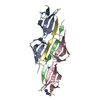
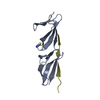

 Components
Components Homo sapiens (human) / Gene: FN1 / Production host:
Homo sapiens (human) / Gene: FN1 / Production host:  Pichia pastoris (fungus) / Strain (production host): GS115 / References: UniProt: P02751
Pichia pastoris (fungus) / Strain (production host): GS115 / References: UniProt: P02751 X-RAY DIFFRACTION / Number of used crystals: 1
X-RAY DIFFRACTION / Number of used crystals: 1  Sample preparation
Sample preparation SYNCHROTRON / Site:
SYNCHROTRON / Site:  ESRF
ESRF  / Beamline: ID14-1 / Wavelength: 0.934 Å
/ Beamline: ID14-1 / Wavelength: 0.934 Å Processing
Processing Movie
Movie Controller
Controller


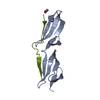
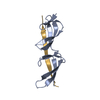
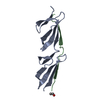
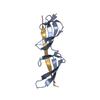
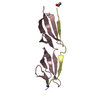


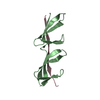



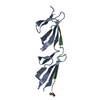

 PDBj
PDBj


















